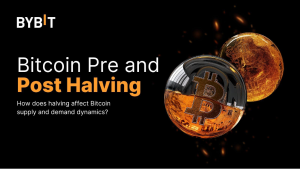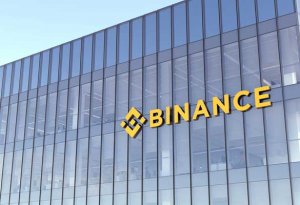The Ghost in the Machine: A detailed inside analysis of the effect of refugee migration to London on FX trading by Eddie Tofpik
By Eddie Tofpik, Head of FX, ADM Investor Services International Ltd, and Visiting Lecturer at University of Essex Shortly after Saturday the 12th of September, I received a message from Andrew Saks-McLeod. Andrew is CEO of Finance Feeds and a generally good friend in the markets. He asked if I’d like to write a guest editorial […]

By Eddie Tofpik, Head of FX, ADM Investor Services International Ltd, and Visiting Lecturer at University of Essex
Shortly after Saturday the 12th of September, I received a message from Andrew Saks-McLeod. Andrew is CEO of Finance Feeds and a generally good friend in the markets.
He asked if I’d like to write a guest editorial for Finance Feeds on my opinion of refugees coming to London and what effects it might have on the largest institutional FX & electronic trading centre in the World. He’d been prompted by pictures and commentary I’d Tweeted along the route of the March for Refugees Welcome Here on the 12th.
My family and I had gone to join the protest and I think many of you (dear readers) were aware of it. At this point I have to declare an interest – my father was a ‘fugee’! He left Poland in 1939 after fighting Nazi & Soviet aggressors and was not able to return until 1989…ironic since his brother, my uncle, was in the Red Army…but that’s another story.

Anyway, though I was flattered by Andrew’s offer, I didn’t think it was much of a story. So few refugees would actually come to the UK that it wouldn’t actually have an economic impact, and that’s where I left it.
However, since then numerous articles from respected economists, journalists and commentators have come out on this point, it has made me think again about impacts refugees/migrants have had in the past and may in the future both at destination and at point of origin. So let’s start at the beginning…or at least one of the beginnings.
On the 17th of December 2010, Mohamed Bouazizi who sold fruit from a cart in Sidi Bouzid, Tunisia, was no longer able to tolerate violent repressive corruption from local officials. He doused himself in lighter fluid & self-immolated. Since then this has led to the ‘Arab Spring’ and in turn to large numbers of refugees crossing Southern Europe towards Germany, Sweden, etc… The effects are still ongoing and will continue for many years. Why?
Political lethargy as a synchronicity of many major elections throughout Europe in the coming few years could be said to be part of it. There are a number of risks to the EU FX markets (no just the Eurozone) as anti-immigration sentiment in EU countries has increased. Some stoked by politicians for gain and some as genuine concerns by citizens but all leading to potentially hazardous volatile impacts on EU currencies. Already, the borderless Schengen area has been partially suspended plus riots at Calais impacting trade flows across the region…that’s just the start.
Next there’s the need politicians have to (be seen to) be doing something…anything…as long as it is something. It could be further indirect/direct intervention in Syria and elsewhere. Not only might this be seen later on to be wrong but now with so many uncoordinated military planes from so many countries flying around a small area, somethings going to give. It may be that local FX, including the ILS, will suffer unnecessary stress moves, transmitted to moves in the EU, Russia other currencies.
“Polish remittances have risen to 1.5% of 2011 GDP. Such numbers move markets. Remittances are a high value FX business and seasonally predictable” – Eddie Tofpik
This also leads to another point; the UK will soon try to negotiate reforms to its EU membership. Will the rest of the EU think the UK is not pulling its weight on refugees? Will there also be enough of a Brexit campaign from refugee fears that might push the UK past the exit tipping point? What will happen to GBP, especially as Scottish Nationalists vocally support EU membership?
Who’s going to pay for it? Well, ultimately we all will but allowing refugees to stay does not come cheap – how will public finances fare, especially in Southern Europe, an area still haunted by Grexit. Another scare?
Up till now I’ve pointed out negatives that may cause FX volatility. So what’s the upside?
Well none of it is immediate to start with. But first, Northern Europe has an aging population. There are two ways to deal with this 1) the ‘Japanese’ solution – increasing technology to assist an older population or 2) the ‘NHS’ solution (for want of a better term) – as many of the refugees are well educated and young, they eventually become migrants (note the change…) and plug any employment gap.
Not so good for many young less skilled EU citizens but there’s no perfect solution…as yet. Indeed, I’ve read of a World Bank paper in 2006 suggesting if 14.2 million ‘workers’ moved from poorer to wealthier countries between 2001 to 2025, then the labour force of wealthier countries would rise by 3 percent and the World’s annual salaries would rise by USD 772 billion. Now’s a good time to mention John F. Kennedy’s attributed phrase ‘…a rising tide lifts all the boats.’
“It may be that local FX, including the ILS, will suffer unnecessary stress moves, transmitted to moves in the EU, Russia other currencies” – Eddie Tofpik
The direct impact migrants as opposed to refugees have on FX markets ought not to be underestimated. Whether the refugees choose to stay and become ‘migrants’ is open but if we look at the GDP effects of migrant remittances they can be spectacular. For example, in Latin America in 2012 a whopping 16.5% of the GDP of El Salvador was remittances. Mexico, though ‘only’ 2% of GDP is remittances it still amounted to a massive USD 22 billion. In Europe, Polish remittances have risen to 1.5% of 2011 GDP. Such numbers move markets. Remittances are a high value FX business and seasonally predictable.
This brings me to my last two stories (points). The first is – no one does you over like your own! In my journeys I’ve had the opportunity to work with some great STF people at ADM. During one of our meetings with an El Salvadoran banker, the banker told of how local money exchange/remittance houses were always situated at the very end of local shopping malls. This was deliberate! When the usually elderly relatives received money from abroad they were enticed by shiny consumerism on their way in and out and soon parted from their relatives’ hard earned money.
The second story is personal. Of all the placards and banners I saw during the Rally & March in London, a single one hit home. It was simply, a large British Flag with ‘SANCTUARY’ written across the centre. It was held up by two smartly dressed you men who would not have been out of place in a City dealing room.
This is a guest editorial which was entirely compiled by, and represents the perspective of Eddie Tofpik, Head of FX, ADM Investor Services International Ltd, and Visiting Lecturer at University of Essex









